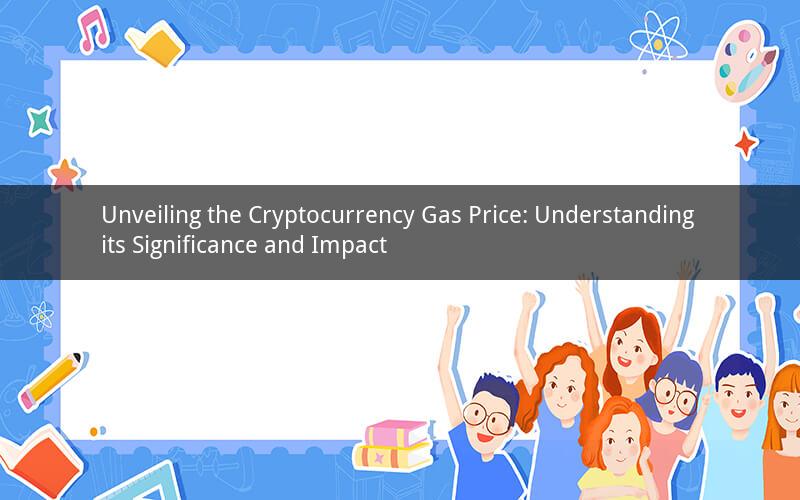
In the rapidly evolving world of cryptocurrencies, the term "gas price" has become an integral part of the blockchain ecosystem. It plays a crucial role in determining the cost of transactions and the overall efficiency of the network. This article delves into the concept of gas price in the cryptocurrency realm, exploring its significance, factors affecting it, and its impact on users and developers.
What is Gas Price?
Gas price refers to the amount of cryptocurrency a user is willing to pay for each unit of transaction processing on a blockchain platform. It is denoted in units of the platform's native cryptocurrency, such as Ether (ETH) for Ethereum. The concept of gas price was introduced to ensure that the network remains decentralized and scalable.
When a user initiates a transaction, such as sending cryptocurrencies or executing smart contracts, the gas price is used to incentivize miners or validators to process the transaction. In other words, the higher the gas price, the more likely the transaction is to be prioritized and processed quickly.
Factors Affecting Gas Price
Several factors influence the gas price on a blockchain platform:
1. Network congestion: When the network is busy, the demand for transaction processing increases, leading to higher gas prices. This situation is often referred to as "network congestion" or "fees war."
2. Transaction complexity: The more complex a transaction is, the higher the gas price tends to be. This is because it requires more computational resources to process the transaction.
3. Supply and demand: Just like any other market, the supply and demand dynamics of the cryptocurrency also affect gas prices. When there is high demand for a particular blockchain platform, gas prices may rise.
4. Network updates: Regular updates or forks in a blockchain platform can also impact gas prices. For instance, the Ethereum network's transition from Proof of Work (PoW) to Proof of Stake (PoS) is expected to reduce gas prices.
Impact on Users and Developers
The gas price has a significant impact on both users and developers in the cryptocurrency ecosystem:
1. Users: High gas prices can discourage users from making transactions, especially small-value ones. This can lead to a decrease in network activity and overall adoption. Conversely, low gas prices encourage more users to participate in the network, leading to increased adoption and activity.
2. Developers: Developers need to consider the gas price when creating and deploying smart contracts. High gas prices can make it expensive to run and maintain smart contracts, potentially discouraging the development of decentralized applications (DApps).
Frequently Asked Questions
1. What is the purpose of the gas price?
The gas price serves as an incentive for miners or validators to process transactions on a blockchain platform, ensuring that the network remains decentralized and scalable.
2. How is the gas price determined?
The gas price is determined by the user, who can set it based on their willingness to pay for transaction processing. However, it is influenced by various factors such as network congestion, transaction complexity, and supply and demand dynamics.
3. Can the gas price be manipulated?
Yes, the gas price can be manipulated by users who set artificially high or low gas prices. However, this is generally discouraged as it can harm the overall ecosystem.
4. How does the gas price affect the network's efficiency?
Higher gas prices can lead to network congestion and slower transaction processing times. Conversely, lower gas prices encourage more users to participate, leading to increased network efficiency.
5. What are the potential long-term implications of the gas price on the cryptocurrency ecosystem?
The gas price is an essential aspect of the cryptocurrency ecosystem. Its long-term implications include ensuring network scalability, incentivizing miners or validators, and encouraging the development of innovative DApps and smart contracts.
In conclusion, the gas price is a crucial element in the cryptocurrency ecosystem, influencing transaction costs, network efficiency, and user adoption. Understanding its significance and factors affecting it is essential for both users and developers to navigate the ever-evolving world of cryptocurrencies.